Five
REROUTING THE
NORTHERN LINE
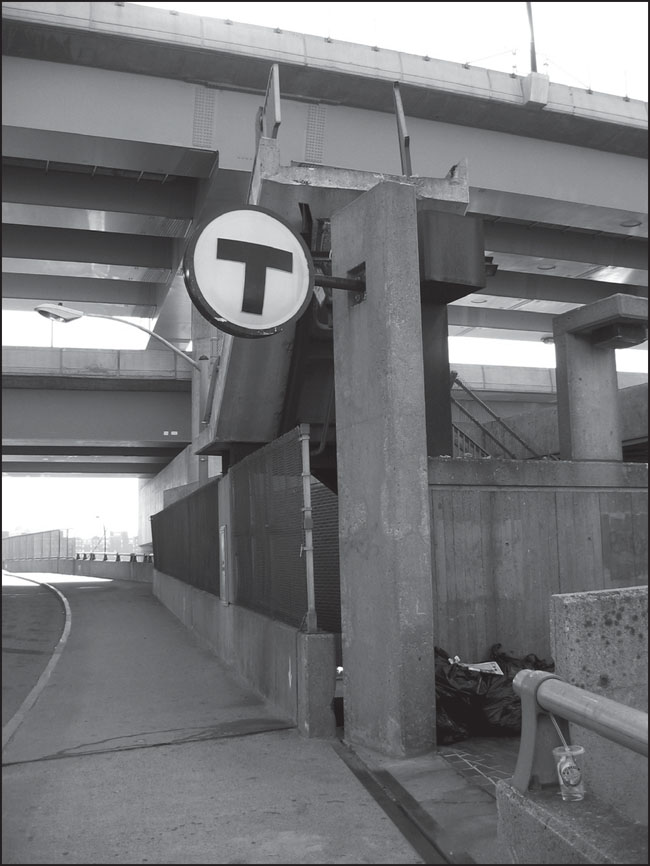
The “T” emblem is prominent outside Community College Station in Charlestown. The emblem was adopted in 1965 and sometimes described as the “Circle-T.” When it was introduced, Massachusetts Bay Transportation Authority officials said the authority would avoid using the initials “MBTA” and asked news media to do the same. The MBTA hoped to distinguish itself from its predecessor, the Metropolitan Transit Authority, or MTA. (Photograph by and courtesy of Andrew Lynch.)
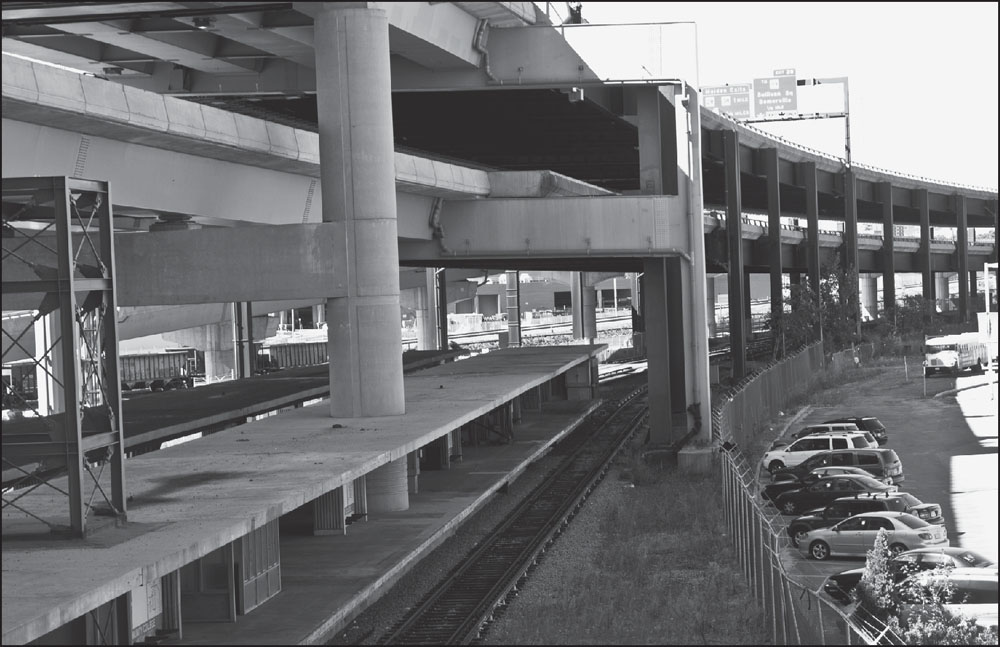
Community College Station (pictured) serves Bunker Hill Community College in Charlestown. It was one of two stations built beneath Interstate 93, along the Boston & Maine Railroad tracks, in the Haymarket North Extension. Construction on the extension was begun in 1966 and completed in 1977. The Charlestown Elevated closed on Friday, April 4, 1975, and shuttle buses carried passengers between Sullivan Square Station and Essex Station while the extension was connected. (Photograph by and courtesy of Nathaniel Marsh.)
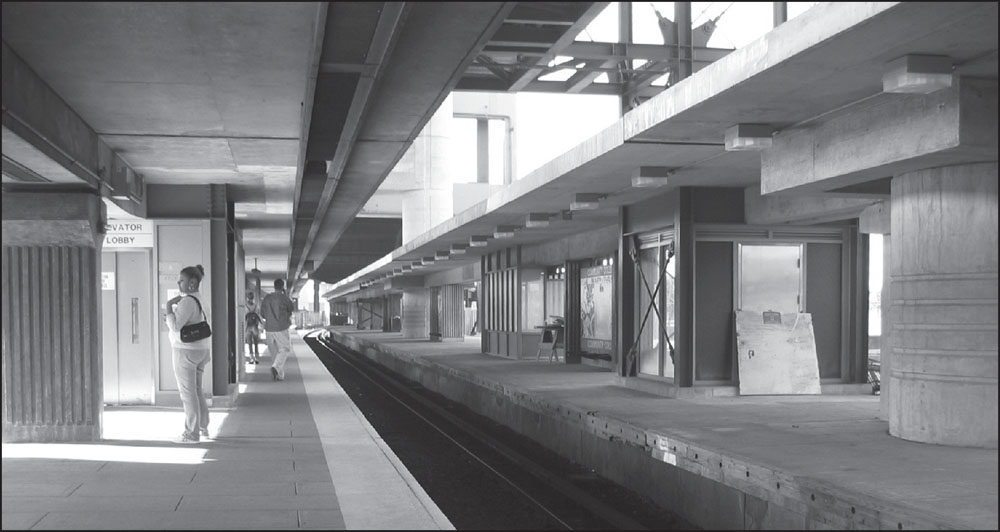
This view shows passengers on the platform at Community College Station. Built about two-fifths of a mile from City Square and a quarter-mile from Thompson Square, it opened on April 7, 1975, along with the new North Station, Community College, and Sullivan Square Stations. Wellington opened in September 1975, followed by Malden Center in December. Oak Grove opened in March 1977, completing the extension. (Photograph by and courtesy of Andrew Lynch.)
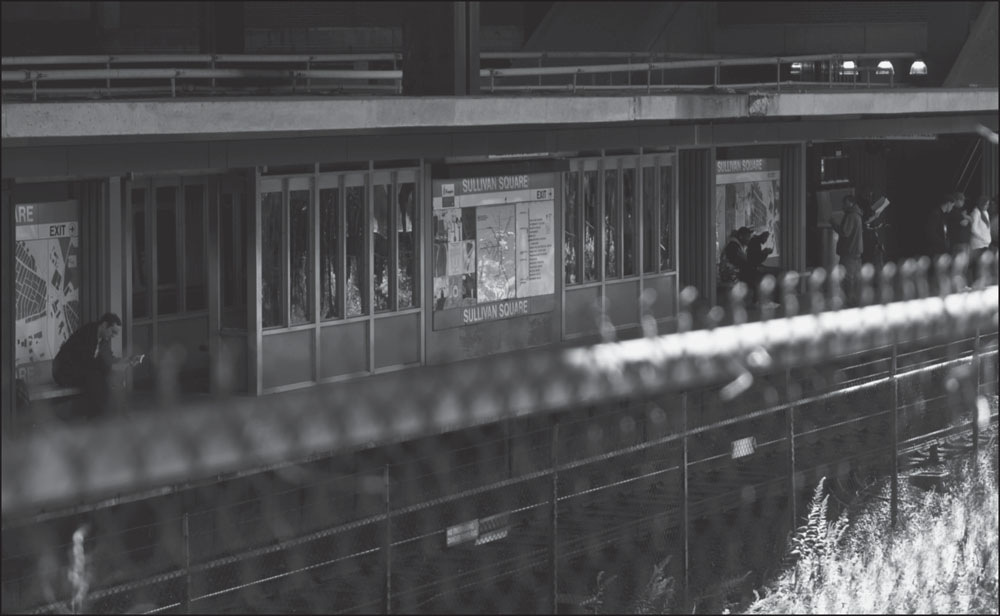
This view shows the inbound platform at Sullivan Square Station across a chain-link fence near the intersection of Brighton and Perkins Streets in Charlestown. A dedication ceremony for the Haymarket North Extension was held at Sullivan Square on April 4, 1975. (Photograph by and courtesy of Nathaniel Marsh.)
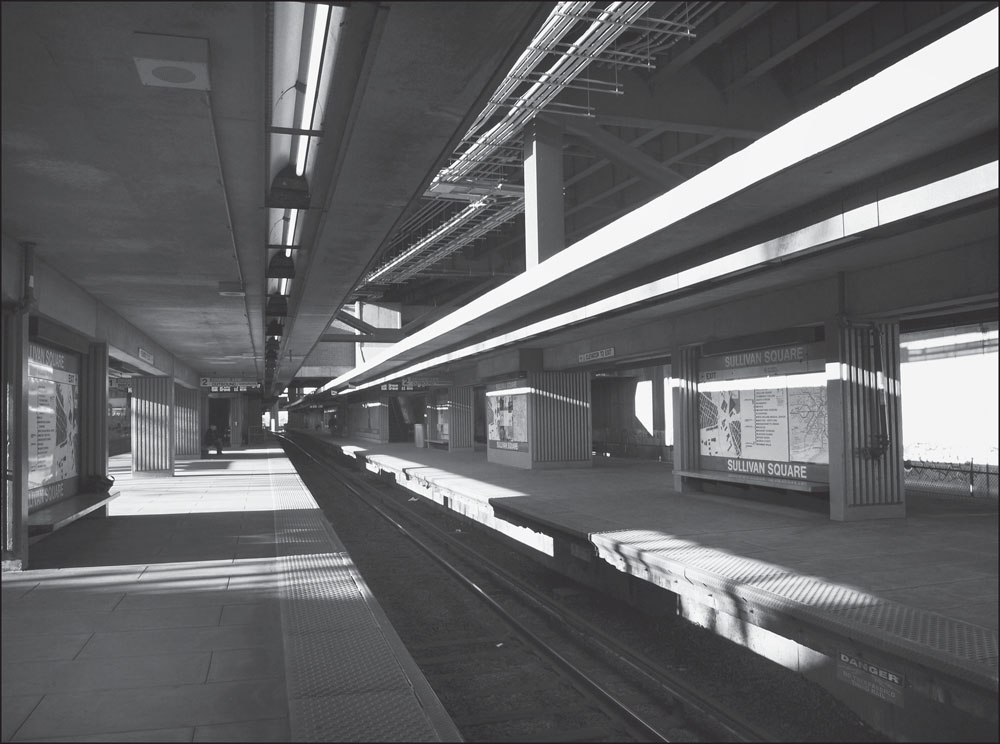
The new Sullivan Square Station is less than one-fifth of a mile from the site of the Elevated Sullivan Square Station, which was demolished in July 1975 and, like its predecessor, is a major bus transfer point. Its utilitarian interior (pictured) is far less grand than the soaring barrel-vaulted structure it replaced. Instead, it is an expanse of grey concrete slabs similar to those at the Community College Station. (Photograph by Jeremy C. Fox.)
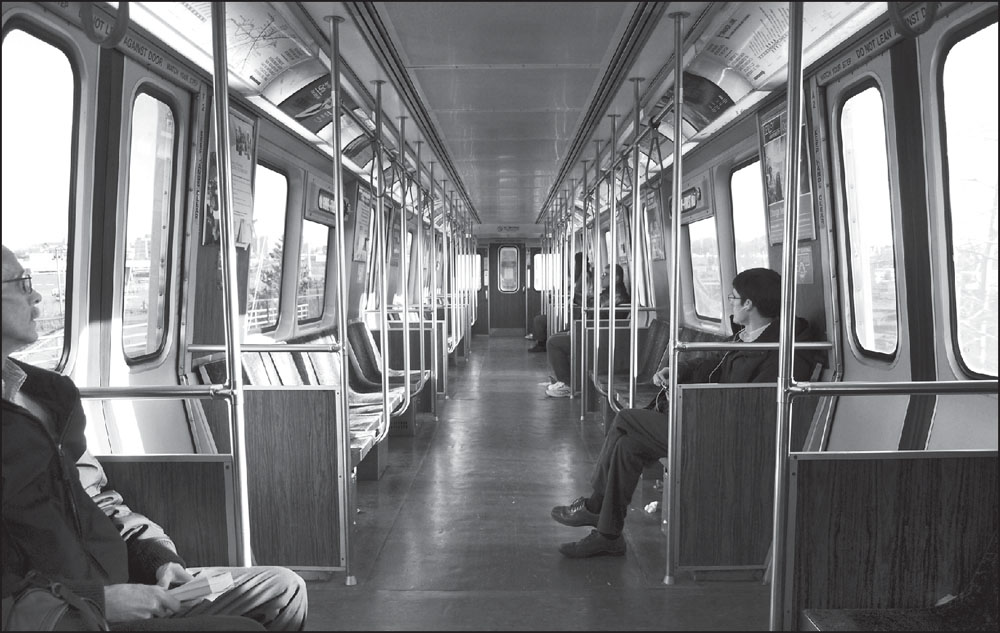
Past Sullivan Square, the northern route of the Orange Line departs from the path of Interstate 93 and travels almost north aboveground for more than a mile, crossing over the Mystic River to Wellington Station in Medford, Massachusetts. Here, a handful of passengers ride inbound from Wellington to Sullivan Square during afternoon rush hour, when most passengers are headed outbound from the city. (Photograph by Jeremy C. Fox.)
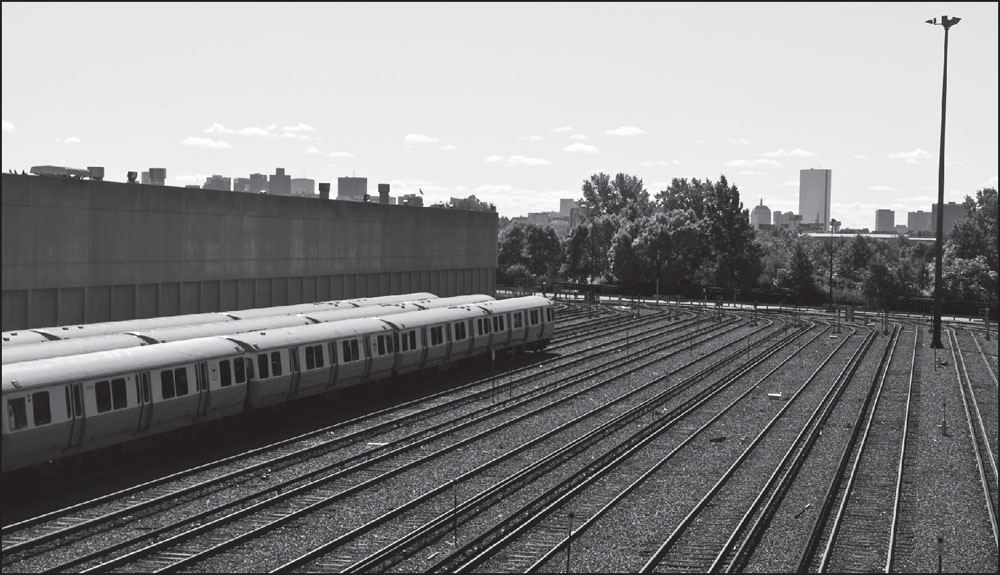
Just west of Wellington Station is the Wellington Carhouse, the Orange Line’s primary repair and maintenance facility, pictured in this southward view with the Hancock Center visible on the skyline. A parking garage, from which this photograph was taken, is connected to the station by an overhead walkway and is west of this railyard and adjacent to Route 28. (Photograph by and courtesy of Nathaniel Marsh.)
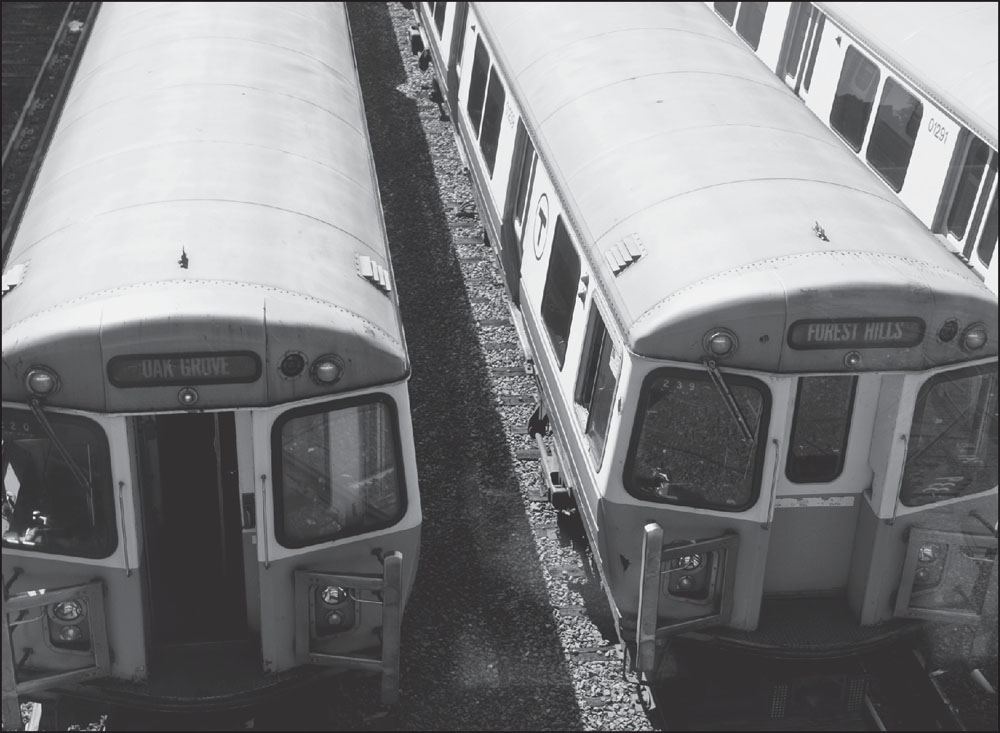
A second photograph from the elevated walkway at Wellington Station offers a closer look at two 01200 series cars displaying the names of the north and south termini of the modern Orange Line. Besides being a major center for maintenance of Orange Line trains, Wellington is an important bus transfer station serving Medford, Malden, Everett, and other surrounding cities. (Photograph by and courtesy of Nathaniel Marsh.)
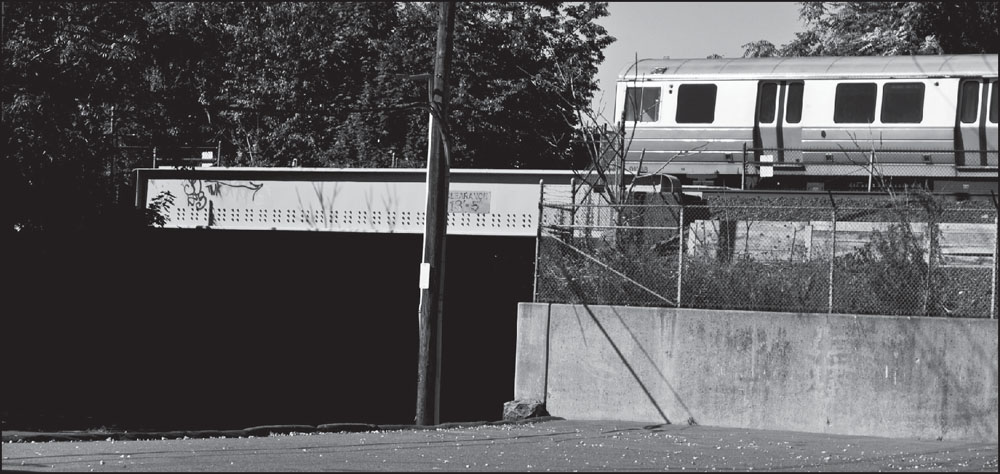
The Orange Line continues north of Wellington Station—sometimes at ground level, sometimes below grade, and sometimes aboveground. Here, a train headed from Malden Center Station to Wellington Station passes over Adams Street in Malden, adjacent to the Piantedosi Baking Company Specialty Division at 240 Commercial Street. (Photograph by and courtesy of Nathaniel Marsh.)
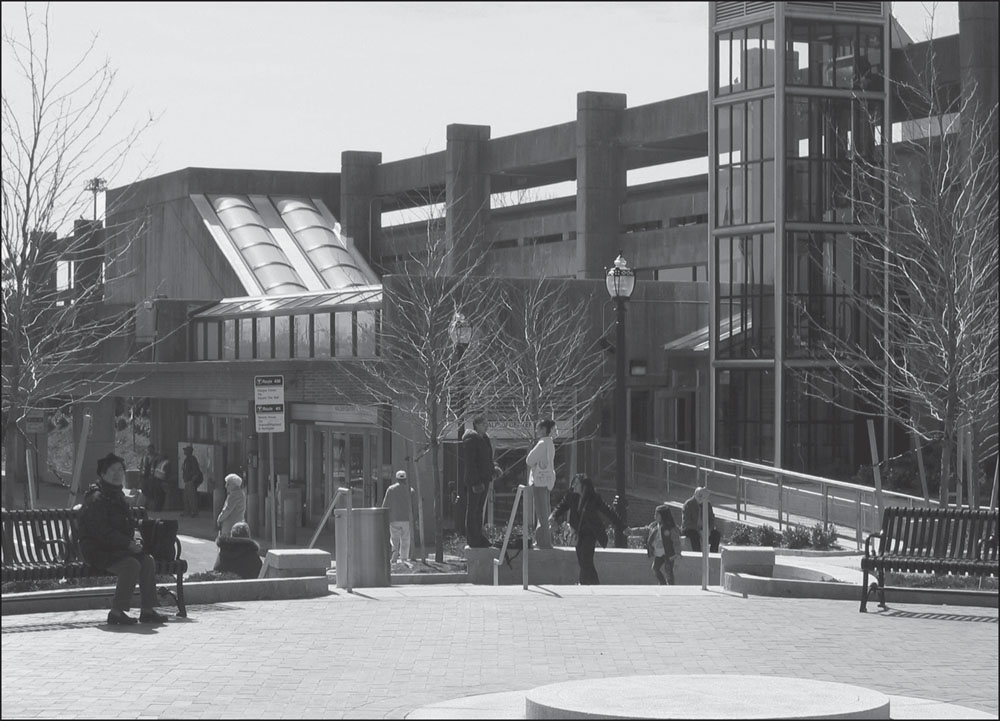
Malden Center Station opened on December 27, 1975, and extended the line past Wellington at a cost of $42 million, according to the Boston Globe. To offset the expense, the MBTA charged a 50¢ fare—double the standard but the same fare charged at Red Line stations in Quincy, also considered by the MBTA to go “beyond the bounds of the basic transit system.” (Photograph by and courtesy of Andrew Lynch.)
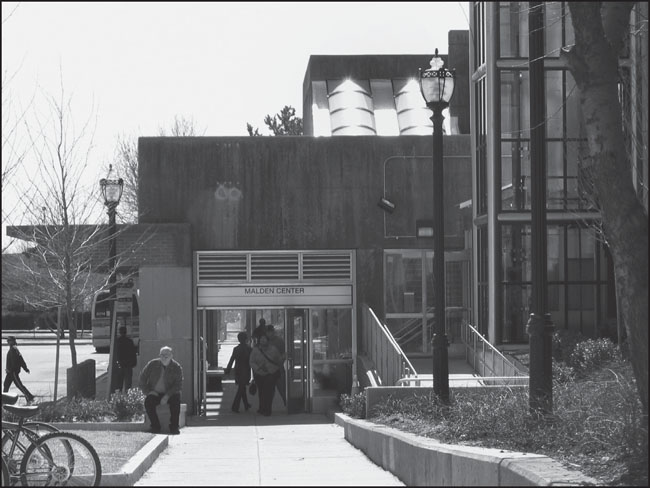
Malden Center Station serves both the Orange Line and the Haverhill Line of the Massachusetts Bay Commuter Railroad. As its name implies, it is centrally located, with Malden Government Center just across Commercial Street. Like the Sullivan Square and Wellington Stations, it is a major bus transfer station. (Photograph by and courtesy of Andrew Lynch.)
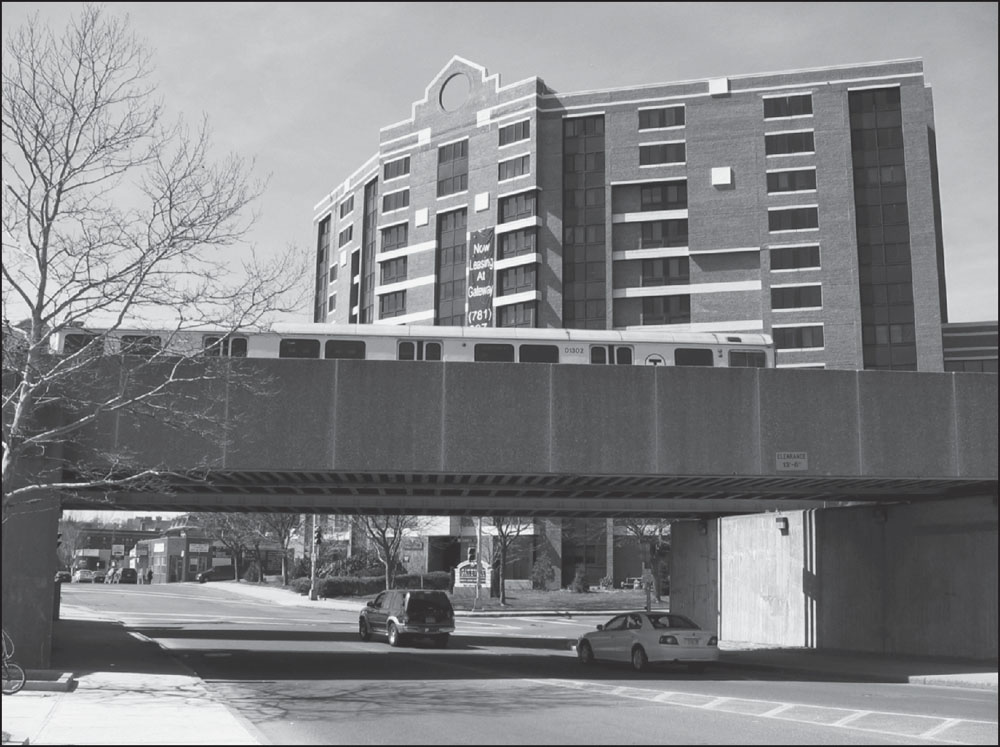
Easy access to downtown Boston by Orange Line has encouraged development of housing, as well as commerce and government offices, in Malden Center. In this photograph taken just north of the station, an outbound train passes over Pleasant Street on its way to Oak Grove, with the Gateway at Malden Center Apartments looming above on Summer Street. (Photograph by and courtesy of Andrew Lynch.)
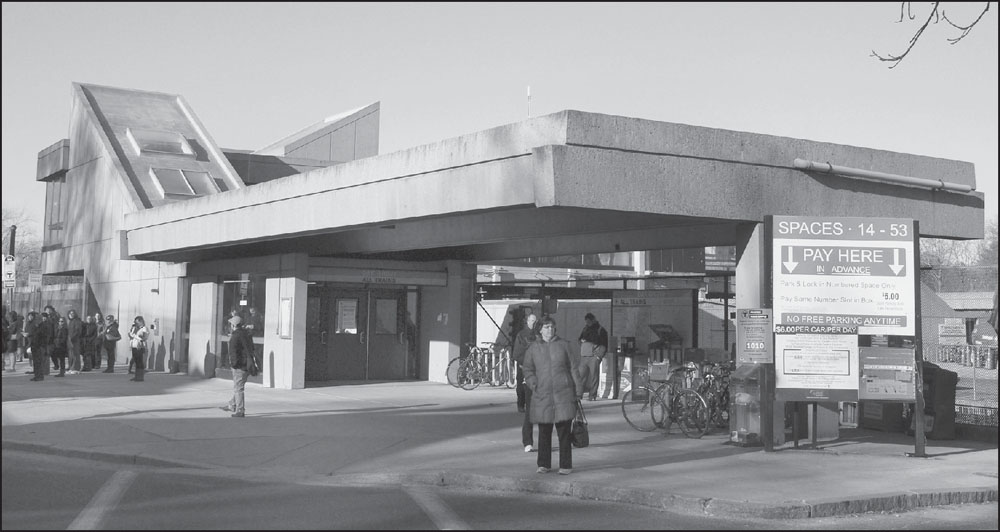
Located in northern Malden near Melrose, Oak Grove Station—the final station in the Haymarket North Extension—opened on March 20, 1977, after a series of delays. Oak Grove is primarily a park-and-ride station, with a parking lot of 788 spaces that serves several surrounding communities. (Photograph by Jeremy C. Fox.)
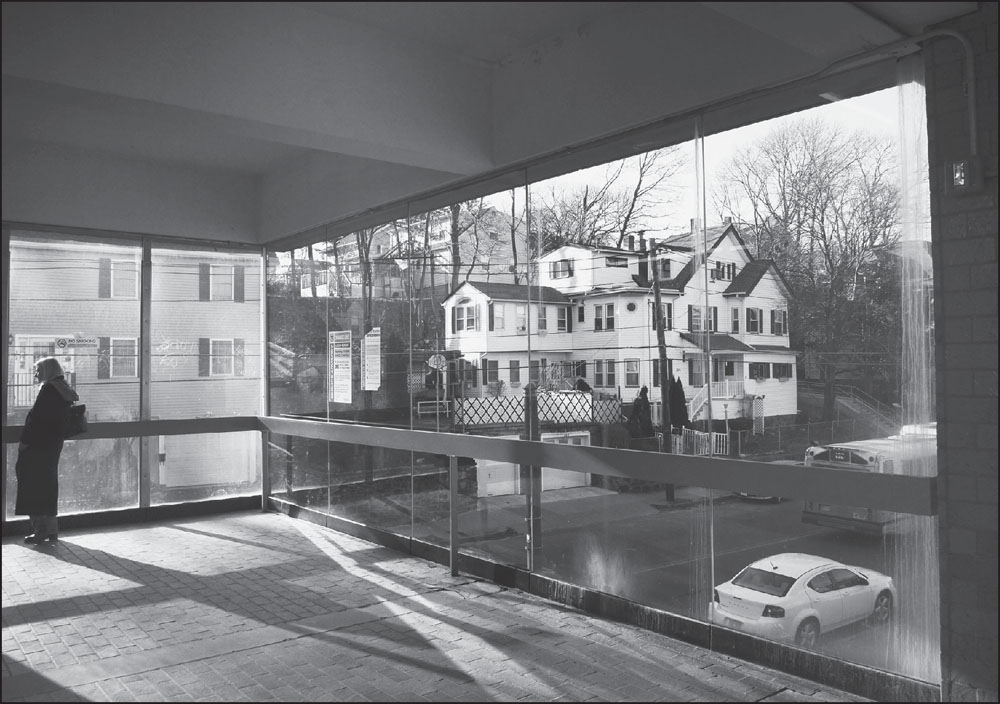
The concrete slabs and sharp angles of Oak Grove Station contrast with the traditional lines of surrounding homes, as shown in this image looking through windows on the west side of the station and across Washington Street. Though the neighborhood is mostly residential, an industrial park lies just south of the station, and Forest Dale Cemetery is to its east. (Photograph by Jeremy C. Fox.)
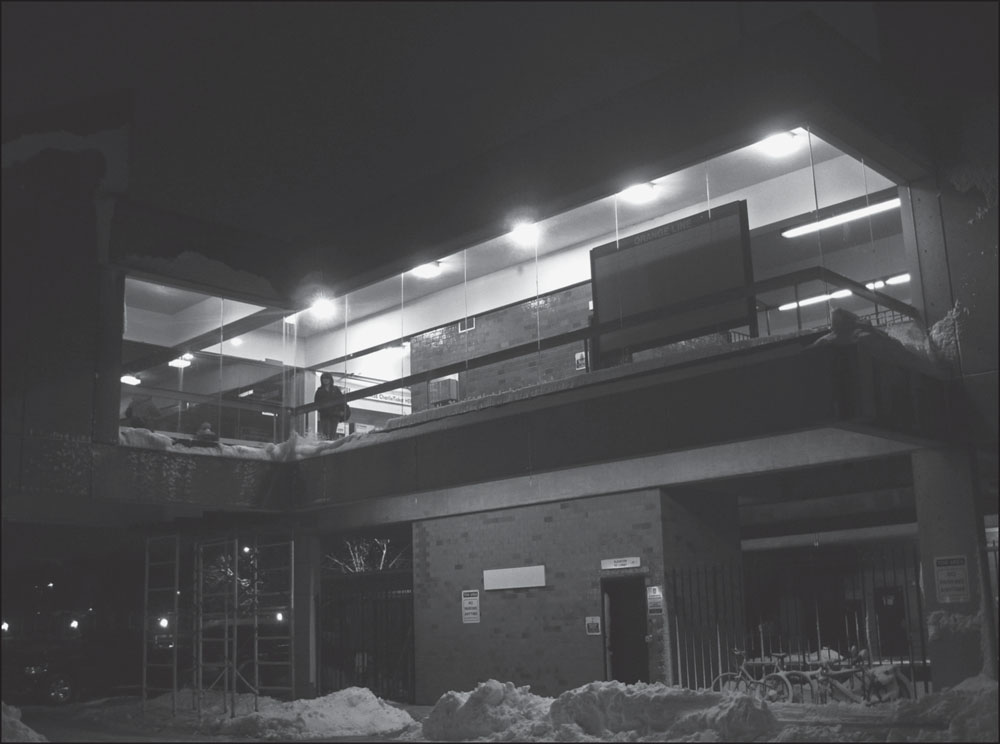
This photograph of Oak Grove Station on a snowy night captures its austerity and drama. Newspapers reported that community efforts to have the Charlestown Elevated removed were almost as old as the structure itself. As early as 1908, Charlestown residents petitioned the Massachusetts Legislature to take down the railway, but it would take nearly 70 years for their hopes to be fulfilled. (Photograph by and courtesy of Paul W. Locke.)














